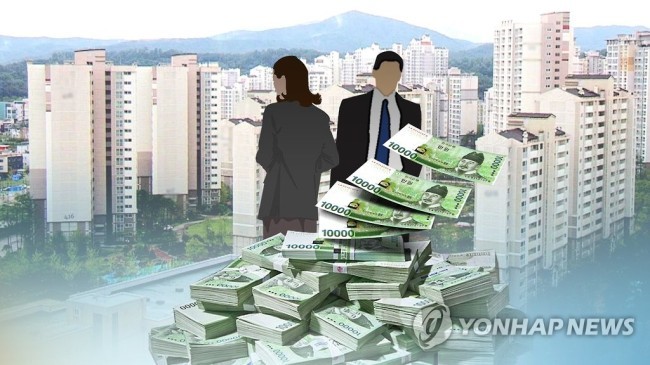The Korean economy may be decoupled from robust global economic recovery next year, held back by a slump in domestic demand and uncertainties in external conditions, economists here say.
The International Monetary Fund recently revised up its global economic growth outlook for next year from 3.6 percent to 3.7 percent, while forecasting the world economy would expand 3.6 percent this year.
Emerging market economies were projected to grow 4.9 percent on average in 2018, up from the 4.6 percent estimated for 2017. In contrast, local private research institutes have put forward a cautious outlook for the Korean economy.
Economists from the Korea Economic Research Institute and the LG Economic Research Institute said in a seminar this week that Asia’s fourth-largest economy was expected to grow in the mid-2 percent range next year, slowing down from the over 3 percent estimated for this year.
In reports released earlier, the Hyundai Research Institute and a think tank affiliated with the Industrial Bank of Korea put the 2018 growth rate at 2.5 percent and 2.7 percent, respectively.
Last week, the Bank of Korea said the country’s gross domestic product would expand 3.1 percent this year, even if it recorded zero growth in the fourth quarter of the year. This prediction followed an announcement by the central bank that the economy grew 1.4 percent from the previous three months in the July-September period, nearly double market expectations. The corresponding figures stood at 1.1 percent and 0.6 percent, respectively, in the first and second quarters.
Economists say 2018 will be an “unstable” year for the Korean economy, citing downside risks at home and abroad.
Possible interest rate hikes coupled with measures to curb rising home prices are expected to further weaken domestic demand.
Private consumption increased 0.7 percent on-quarter in the July-September period, slowing down from 1 percent in the previous quarter. Its contribution to GDP growth also dropped from 1.5 percentage points to 0.5 percentage points over the cited period.
 |
(Yonhap) |
Labor-friendly policies pursued by the Moon Jae-in administration are also expected to reduce consumption spending, analysts say.
A study by the National Assembly Budget Office showed increasing the minimum wage to 10,000 won ($8.95) per hour over the next three years as planned would decrease the number of employees by 0.1 percentage point in 2020, resulting in private consumption growth rate shrinking by up to 1 percentage point in the year.
As a result, economic growth rate in the year would be dragged down by as much as 0.12 percentage points.
Other measures to cut work hours and call for changing temporary jobs into permanent ones are expected to further push employers, particularly self-employed businesses and small and mid-sized enterprises, to slash their payrolls.
The government’s efforts to curb rising house prices, coupled with its decision to reduce infrastructure spending to help fund expanded welfare programs, are set to dampen construction investment, which has shored up domestic demand.
According to the BOK, on-year growth in construction investment is projected to remain at a mere 0.2 percent next year, compared to the 6.7 percent forecast for this year.
“To encourage companies to increase investment and employment, the government should avoid implementing policies that would increase corporate costs and uncertainties in the business environment,” said Sung Tae-yoon, an economics professor at Yonsei University.
Economists and policymakers worry that rising interest rates coupled with sluggish employment and decreasing incomes could exacerbate the household debt problem. The amount of debts owed by the country’s households has exceeded 1,400 trillion won.
Exports remain as a bright spot in the Korean economy.
In October, the country’s overseas shipments rose 7.1 percent from a year earlier to $44.98 billion, marking a 12th consecutive monthly increase, according to data from the Ministry of Trade, Industry and Energy.
On the back of rising global demand for Korea’s high-tech products such as semiconductors, the country is on track to gain its highest share of global exports this year, breaking the existing record of 3.19 percent set in 2015.
But the recent steep appreciation of the won against the dollar and the planned renegotiations of the free trade accord between Korea and the US could weigh on the country’s exporters.
Sung noted most of the country’s traditional manufacturing industries are losing competitiveness in global markets, emphasizing the need to accelerate industrial restructuring.
Economists say efforts should be stepped up to complete structural reforms and develop long-term growth engines before the Korean economy is in the doldrums.
In a recent survey of 489 economic experts, conducted by the Korea Development Institute, a state-run think tank, more than 88 percent agreed the Korean economy remained trapped in the “boiling frog syndrome.”
Over 90 percent said the country had less than five years to pull out of the critical condition.
Kim Hyun-wook, a KDI researcher, said it is necessary to carry out policies focused on reviving economic vitality to bolster the country’s growth potential, which is presumed to fall below 2 percent in the early 2020s.
By Kim Kyung-ho (
khkim@heraldcorp.com)








![[Today’s K-pop] Blackpink’s Jennie, Lisa invited to Coachella as solo acts](http://res.heraldm.com/phpwas/restmb_idxmake.php?idx=644&simg=/content/image/2024/11/21/20241121050099_0.jpg)